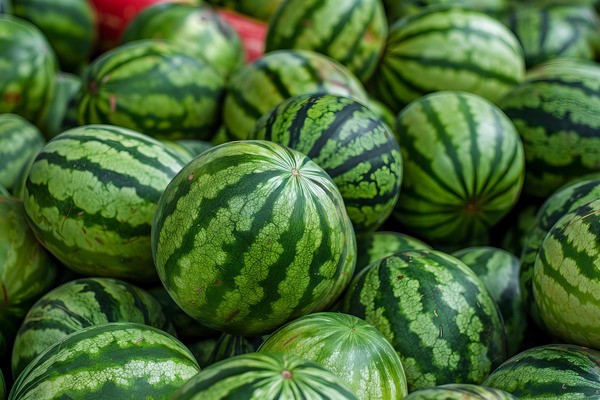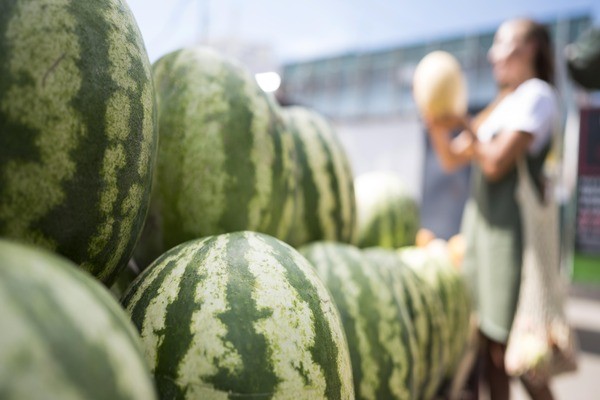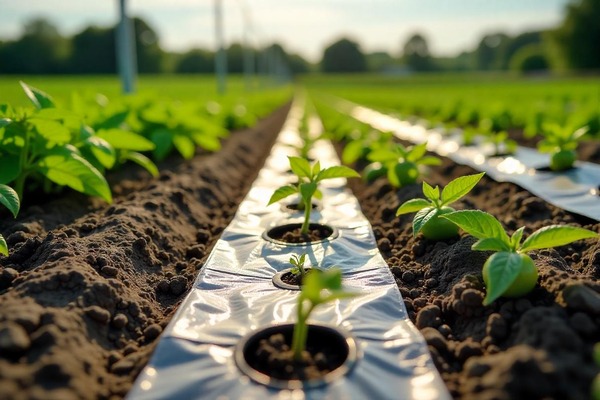
Summer has arrived, and so has the watermelon season. With rising demand, farmers are turning to smarter cultivation methods to boost yield and meet the market needs. One such method is the use of mulch films in watermelon farming. These films help improve fruit quality, conserve water, and control weeds -making them a reliable choice for modern growers.
For large-scale growers, achieving better yield, quality, and efficiency is essential, and it is possible with the right use of mulch films.
In this article, we’ll cover everything you need to know about using mulch films for watermelon farming - from how they work, how to choose the right one, to best practices for getting the most out of them.
Why Use Mulch Films in Watermelon Farming?
Watermelon is a crop that thrives in warm weather, requires consistent moisture, and demands careful attention to weed control. Mulch films provide several important benefits that help farmers grow healthier watermelons with greater efficiency.
- Stops Weed Growth
Mulch films block sunlight from the soil. This stops weeds from growing, which means less need for spraying or removing weeds.
- Saves Water
They slow down water loss from the soil. This keeps the soil moist for longer, which is helpful during hot days.
- Keeps Soil Temperature Right
Mulch films help the soil stay warm in cool weather and cooler in very hot weather. This supports healthy plant roots.
- Improves Fruit Quality
The film keeps the watermelon off the soil. This helps the fruit stay clean and reduces the chance of it rotting or getting damaged.
- Reduces Pests and Diseases
It acts like a barrier, stopping some pests and soil-related diseases from reaching the plant.
How to Choose the Right Mulch Film for Watermelon Farming?
Choosing the right mulch film is important for getting the best results in watermelon farming. Here are the key factors to consider:
- Color
Silver-black and black mulch films are commonly used. The silver side reflects sunlight, which helps keep insects away. The black side blocks sunlight from reaching the soil, stopping weeds from growing. - Thickness
A film with 20–25 microns thickness is ideal. It’s strong enough to last through the growing season and cost-effective for large farms. - Permeability
If you’re farming in a dry area, go for non-perforated (completely sealed, with no holes) mulch films to hold in moisture. In humid areas, perforated films are better as they allow air to pass through, preventing too much heat or moisture build-up. - UV Resistance
Mulch films with UV protection last longer under strong sunlight. This helps the film stay in good condition throughout the season. - Biodegradability
If you’re looking for eco-friendly options, biodegradable mulch films are a good choice. They reduce plastic waste and are better for the environment.
How to Use Mulch Films for Watermelon Farming?
- Soil Preparation
Start by leveling the field and watering the soil. The soil should be soft and moist before you lay the film. This helps the film sit properly and allows better plant growth. - Film Laying
Use a mulch laying machine for fast and even coverage, especially on large farms. In smaller fields, you can lay the film by hand, but make sure it is flat and tight against the soil. - Planting
After laying the film, make small holes at proper distances where the seedlings will be planted. This ensures good spacing and healthy growth. - Drip Irrigation
Place a drip irrigation line under the mulch film. It saves water and gives nutrients directly to the plant roots, making the process more efficient. - Monitoring
Check the mulch film regularly for any tears, holes, or edges lifting due to wind. If needed, secure the sides with soil to keep the film in place.
How to Manage Mulch Film Throughout the Season?
Taking care of mulch films during the growing season is important for healthy crop growth. Regularly check the film for any damage like small tears or holes caused by wind, tools, or animals, and fix them quickly. Make sure the soil stays moist under the film by adjusting your drip irrigation if needed.
Keep an eye on the edges, sometimes weeds can grow around them, so remove those to avoid crop competition. Also, strong winds or heavy rain can lift the film, so press the edges down with soil or pegs to keep it in place. A little care throughout the season can make a big difference in your harvest.
Harvesting becomes easier and cleaner when mulch films are used. Since the fruits don’t touch the soil directly, they stay clean and have fewer chances of rotting. After harvest, remove the mulch film properly to prepare the field for the next crop.
Common Mistakes to Avoid
- Laying film on dry or uneven soil – Always level and moisten the soil before applying mulch.
- Wrong spacing for planting holes – Incorrect spacing can affect plant growth and yield.
- Skipping drip irrigation – Mulch needs proper watering from below; surface watering won’t be effective.
- Not checking for damage – Ignoring tears or lifted edges can reduce the film’s benefits.
- Leaving mulch after harvest – Always remove used film to keep the soil healthy for the next season.
Avoiding these simple mistakes can help you get the best quality watermelons. So, plan well and make most out of these mulch films for a healthy harvest.
Experience Quality Yields with Neha Mulch Film
Mulch film plays a key role in watermelon farming by helping retain moisture, stopping weed growth, and improving both fruit quality and yield. When used the right way, it creates the ideal environment for healthy watermelon crops. From choosing the right film to maintaining it through the season, every step matters.
If you're planning to use mulch films in your watermelon farm, now is a great time to start. Get in touch with Neha Mulch Film, we helped thousands of farmers increase their agricultural production using mulch film. We're here to guide you every step of the way.
Read More: Water Woes? How Plastic Mulching Paper Keeps Your Soil Hydrated






